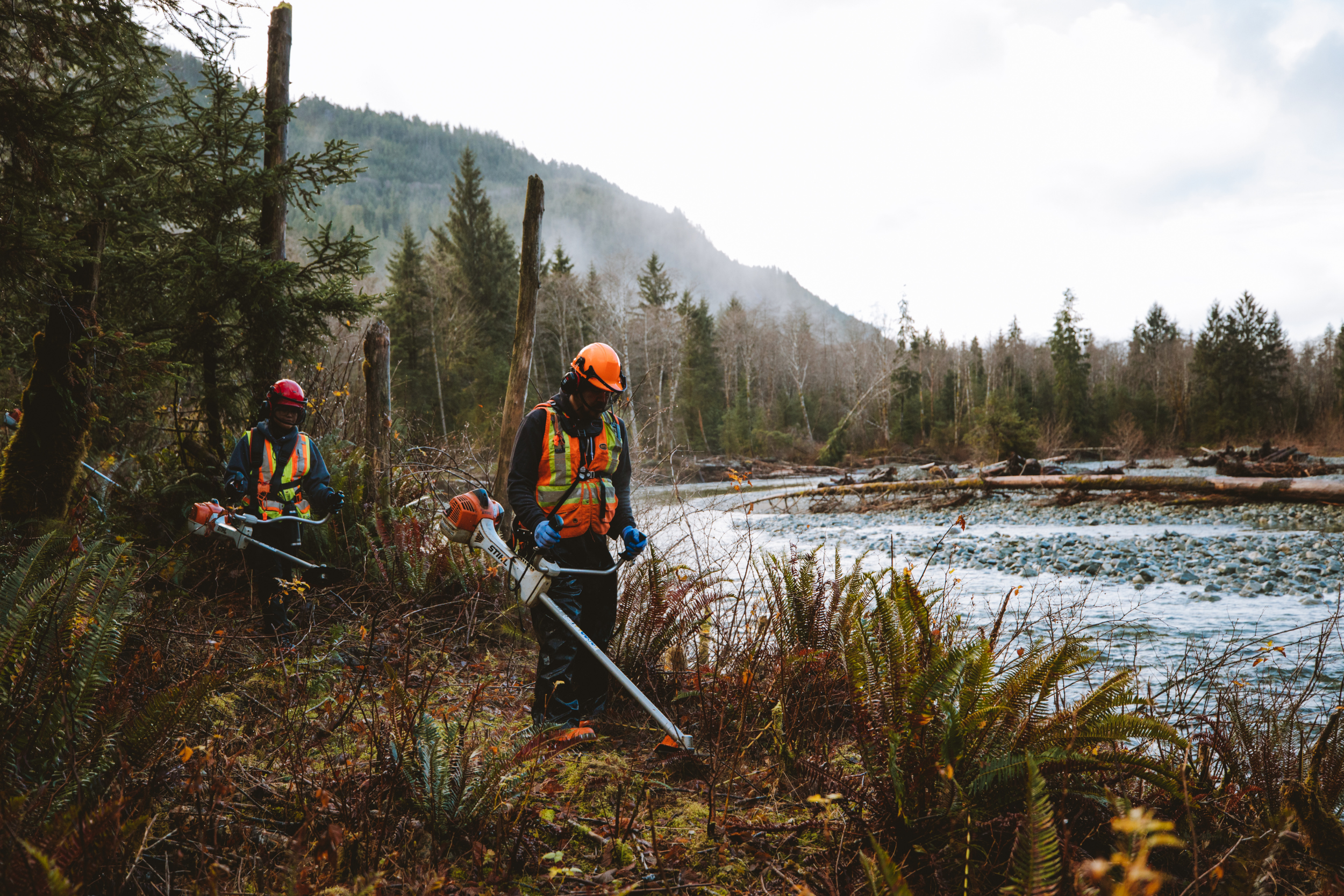This restoration work takes place within the hahuułi of ƛaʔuukʷiʔatḥ ḥawiiḥ (traditional territory of Tla-o-qui-aht First Nation’s hereditary chiefs).
Background
The Tranquil Creek watershed is located approximately 20 kilometers northeast of Tofino, within the traditional territory of the Tla-o-qui-aht First Nation on Vancouver Island.
Hiłsyaqƛis, as the watershed is named in Nuu-chah-nulth, has been managed by the nation since time immemorial.
Traditionally, Tla-o-qui-aht First Nation Lands and Resources Manager Saya Masso said every river had a family responsible for its caretaking. These river-guardians built rock weirs so fish could be managed for abundance. When salmon were migrating back to the rivers to spawn, community members were only allowed to harvest from the middle of the run – letting the strongest fish continue their journey upstream.
Colonial policies and legislation disrupted those traditional practices and excluded the nation from decision-making within its own territory in the 1900s.
Industrial logging began in Hiłsyaqƛis in the 1960s. Within five years, the lower watershed was clear-cut with no protection afforded to the fish-bearing reaches, which were logged to the water’s edge. Those riparian areas continued to be logged for over three decades.
Today, no continuous old-growth stands remain along the riparian corridor in the lower reaches of Tranquil Creek, where fish return from the sea to spawn.
These issues were compounded by unregulated harvesting and poorly built roads in the upper Tranquil Creek watershed, which have triggered a number of landslides that have added more sediment and debris to the lower streams.
Hiłsyaqƛis once supported Chinook, coho, chum, pink and sockeye salmon. Records as far back as 1947 show a yearly average of 750 returning Chinook. In 2018, only 59 were observed.
Despite ongoing enhancement since 1991, the Chinook population has not rebounded.
It’s been over 50 years since the watershed was originally logged, but it has not yet recovered and critical freshwater habitat continues to degrade.
Summary
Restoration efforts have been focused on accelerating processes that create and sustain habitat. Short-term strategies, including in-stream and off-channel habitat restoration, are being carried out. They were implemented alongside other techniques requiring a longer-term recovery trajectory, such as riparian restoration, slope stabilization and road deactivation.
This work provides an opportunity to set specific habitat restoration targets that reflect conditions available historically that local salmon populations were genetically adapted to.
Assessment of the Tranquil Creek found six main factors that are likely limiting salmonid production:
Channel instability
Limited large, woody debris
Extensive bank erosion
Lack of off-channel habitat
Limited cover overhead and in-stream
Limited pool frequency
Bedload movement
Presence of fines in substrate composition
Some of the ways Redd Fish and Tla-o-qui-aht have been working to address these factors include:
Planting and seeding trees to help build up soil and provide a root system within the slopes
Building steps into slopes using a bioengineered technique called modified brush layers (MBLs), which are an effective way to reduce the length of a slope and provide stable sites for vegetation to grow
Spreading seed on sandy and silty soils to help develop the soil and prepare sites for colonization of successional species
Building 16 self-ballasting engineered log jams across a 4-hectare gravel bar to slow the force of water and remove leaf litter from the river
Construction of engineered logs jams to encourage pool development and add cover and shade for salmon
Through restoration and ongoing monitoring, Redd Fish and Tla-o-qui-aht First Nation are attempting to reverse the legacy of destruction left behind by the forestry industry
Research & Monitoring
Further research, monitoring and restoration prescriptions are being designed on an on-going basis to address the limiting factors facing the Tranquil Creek watershed.
Media
Project Partners
Want to see more amazing work on this project, and others like it? Support Redd Fish by donating here:







